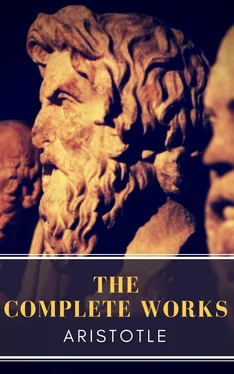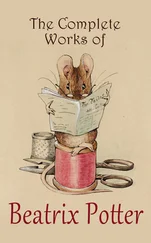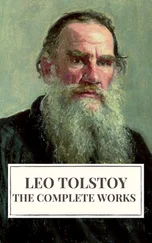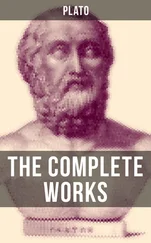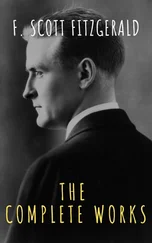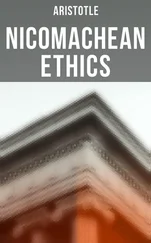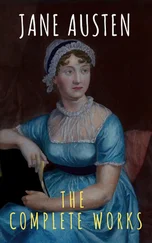Aristotle Aristotle - Aristotle - The Complete Works
Здесь есть возможность читать онлайн «Aristotle Aristotle - Aristotle - The Complete Works» — ознакомительный отрывок электронной книги совершенно бесплатно, а после прочтения отрывка купить полную версию. В некоторых случаях можно слушать аудио, скачать через торрент в формате fb2 и присутствует краткое содержание. Жанр: unrecognised, на английском языке. Описание произведения, (предисловие) а так же отзывы посетителей доступны на портале библиотеки ЛибКат.
- Название:Aristotle: The Complete Works
- Автор:
- Жанр:
- Год:неизвестен
- ISBN:нет данных
- Рейтинг книги:3 / 5. Голосов: 1
-
Избранное:Добавить в избранное
- Отзывы:
-
Ваша оценка:
- 60
- 1
- 2
- 3
- 4
- 5
Aristotle: The Complete Works: краткое содержание, описание и аннотация
Предлагаем к чтению аннотацию, описание, краткое содержание или предисловие (зависит от того, что написал сам автор книги «Aristotle: The Complete Works»). Если вы не нашли необходимую информацию о книге — напишите в комментариях, мы постараемся отыскать её.
This edition has been professionally formatted and contains several tables of contents. The first table of contents (at the very beginning of the ebook) lists the titles of all novels included in this volume. By clicking on one of those titles you will be redirected to the beginning of that work, where you'll find a new TOC that lists all the chapters and sub-chapters of that specific work.
Aristotle: The Complete Works — читать онлайн ознакомительный отрывок
Ниже представлен текст книги, разбитый по страницам. Система сохранения места последней прочитанной страницы, позволяет с удобством читать онлайн бесплатно книгу «Aristotle: The Complete Works», без необходимости каждый раз заново искать на чём Вы остановились. Поставьте закладку, и сможете в любой момент перейти на страницу, на которой закончили чтение.
Интервал:
Закладка:
(10) Also if the premiss AB is partially false, and the premiss BC is false too, the conclusion may be true. For nothing prevents A belonging to some B and to some C, though B belongs to no C, e.g. if B is the contrary of C, and both are accidents of the same genus: for animal belongs to some white things and to some black things, but white belongs to no black thing. If then it is assumed that A belongs to all B, and B to some C, the conclusion will be true. Similarly if the premiss AB is negative: for the same terms arranged in the same way will serve for the proof.
(11) Also though both premisses are false the conclusion may be true. For it is possible that A may belong to no B and to some C, while B belongs to no C, e.g. a genus in relation to the species of another genus, and to the accident of its own species: for animal belongs to no number, but to some white things, and number to nothing white. If then it is assumed that A belongs to all B and B to some C, the conclusion will be true, though both premisses are false. Similarly also if the premiss AB is negative. For nothing prevents A belonging to the whole of B, and not to some C, while B belongs to no C, e.g. animal belongs to every swan, and not to some black things, and swan belongs to nothing black. Consequently if it is assumed that A belongs to no B, and B to some C, then A does not belong to some C. The conclusion then is true, but the premisses arc false.
3
In the middle figure it is possible in every way to reach a true conclusion through false premisses, whether the syllogisms are universal or particular, viz. when both premisses are wholly false; when each is partially false; when one is true, the other wholly false (it does not matter which of the two premisses is false); if both premisses are partially false; if one is quite true, the other partially false; if one is wholly false, the other partially true. For (1) if A belongs to no B and to all C, e.g. animal to no stone and to every horse, then if the premisses are stated contrariwise and it is assumed that A belongs to all B and to no C, though the premisses are wholly false they will yield a true conclusion. Similarly if A belongs to all B and to no C: for we shall have the same syllogism.
(2) Again if one premiss is wholly false, the other wholly true: for nothing prevents A belonging to all B and to all C, though B belongs to no C, e.g. a genus to its co-ordinate species. For animal belongs to every horse and man, and no man is a horse. If then it is assumed that animal belongs to all of the one, and none of the other, the one premiss will be wholly false, the other wholly true, and the conclusion will be true whichever term the negative statement concerns.
(3) Also if one premiss is partially false, the other wholly true. For it is possible that A should belong to some B and to all C, though B belongs to no C, e.g. animal to some white things and to every raven, though white belongs to no raven. If then it is assumed that A belongs to no B, but to the whole of C, the premiss AB is partially false, the premiss AC wholly true, and the conclusion true. Similarly if the negative statement is transposed: the proof can be made by means of the same terms. Also if the affirmative premiss is partially false, the negative wholly true, a true conclusion is possible. For nothing prevents A belonging to some B, but not to C as a whole, while B belongs to no C, e.g. animal belongs to some white things, but to no pitch, and white belongs to no pitch. Consequently if it is assumed that A belongs to the whole of B, but to no C, the premiss AB is partially false, the premiss AC is wholly true, and the conclusion is true.
(4) And if both the premisses are partially false, the conclusion may be true. For it is possible that A should belong to some B and to some C, and B to no C, e.g. animal to some white things and to some black things, though white belongs to nothing black. If then it is assumed that A belongs to all B and to no C, both premisses are partially false, but the conclusion is true. Similarly, if the negative premiss is transposed, the proof can be made by means of the same terms.
It is clear also that our thesis holds in particular syllogisms. For (5) nothing prevents A belonging to all B and to some C, though B does not belong to some C, e.g. animal to every man and to some white things, though man will not belong to some white things. If then it is stated that A belongs to no B and to some C, the universal premiss is wholly false, the particular premiss is true, and the conclusion is true. Similarly if the premiss AB is affirmative: for it is possible that A should belong to no B, and not to some C, though B does not belong to some C, e.g. animal belongs to nothing lifeless, and does not belong to some white things, and lifeless will not belong to some white things. If then it is stated that A belongs to all B and not to some C, the premiss AB which is universal is wholly false, the premiss AC is true, and the conclusion is true. Also a true conclusion is possible when the universal premiss is true, and the particular is false. For nothing prevents A following neither B nor C at all, while B does not belong to some C, e.g. animal belongs to no number nor to anything lifeless, and number does not follow some lifeless things. If then it is stated that A belongs to no B and to some C, the conclusion will be true, and the universal premiss true, but the particular false. Similarly if the premiss which is stated universally is affirmative. For it is possible that should A belong both to B and to C as wholes, though B does not follow some C, e.g. a genus in relation to its species and difference: for animal follows every man and footed things as a whole, but man does not follow every footed thing. Consequently if it is assumed that A belongs to the whole of B, but does not belong to some C, the universal premiss is true, the particular false, and the conclusion true.
(6) It is clear too that though both premisses are false they may yield a true conclusion, since it is possible that A should belong both to B and to C as wholes, though B does not follow some C. For if it is assumed that A belongs to no B and to some C, the premisses are both false, but the conclusion is true. Similarly if the universal premiss is affirmative and the particular negative. For it is possible that A should follow no B and all C, though B does not belong to some C, e.g. animal follows no science but every man, though science does not follow every man. If then A is assumed to belong to the whole of B, and not to follow some C, the premisses are false but the conclusion is true.
4
In the last figure a true conclusion may come through what is false, alike when both premisses are wholly false, when each is partly false, when one premiss is wholly true, the other false, when one premiss is partly false, the other wholly true, and vice versa, and in every other way in which it is possible to alter the premisses. For (1) nothing prevents neither A nor B from belonging to any C, while A belongs to some B, e.g. neither man nor footed follows anything lifeless, though man belongs to some footed things. If then it is assumed that A and B belong to all C, the premisses will be wholly false, but the conclusion true. Similarly if one premiss is negative, the other affirmative. For it is possible that B should belong to no C, but A to all C, and that should not belong to some B, e.g. black belongs to no swan, animal to every swan, and animal not to everything black. Consequently if it is assumed that B belongs to all C, and A to no C, A will not belong to some B: and the conclusion is true, though the premisses are false.
(2) Also if each premiss is partly false, the conclusion may be true. For nothing prevents both A and B from belonging to some C while A belongs to some B, e.g. white and beautiful belong to some animals, and white to some beautiful things. If then it is stated that A and B belong to all C, the premisses are partially false, but the conclusion is true. Similarly if the premiss AC is stated as negative. For nothing prevents A from not belonging, and B from belonging, to some C, while A does not belong to all B, e.g. white does not belong to some animals, beautiful belongs to some animals, and white does not belong to everything beautiful. Consequently if it is assumed that A belongs to no C, and B to all C, both premisses are partly false, but the conclusion is true.
Читать дальшеИнтервал:
Закладка:
Похожие книги на «Aristotle: The Complete Works»
Представляем Вашему вниманию похожие книги на «Aristotle: The Complete Works» списком для выбора. Мы отобрали схожую по названию и смыслу литературу в надежде предоставить читателям больше вариантов отыскать новые, интересные, ещё непрочитанные произведения.
Обсуждение, отзывы о книге «Aristotle: The Complete Works» и просто собственные мнения читателей. Оставьте ваши комментарии, напишите, что Вы думаете о произведении, его смысле или главных героях. Укажите что конкретно понравилось, а что нет, и почему Вы так считаете.
